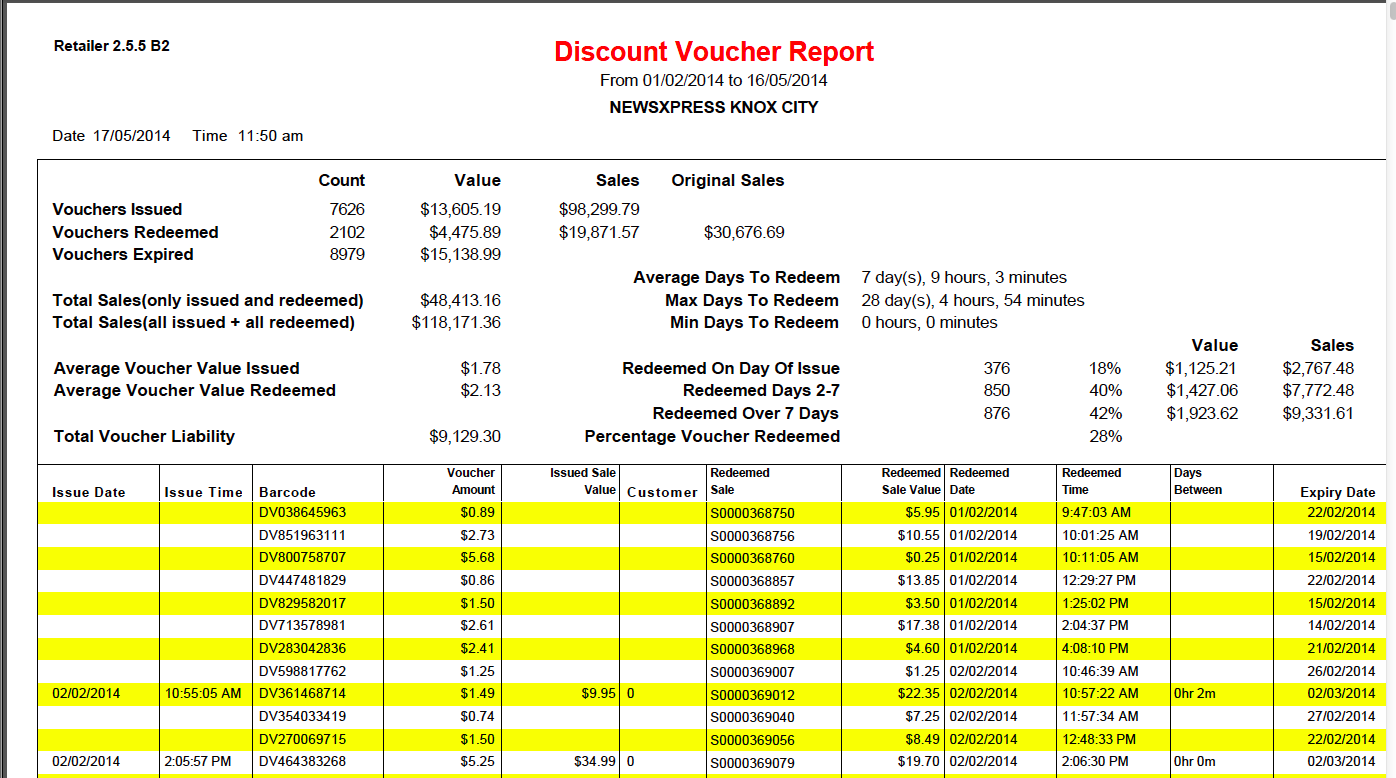I was not too happy about an article published which I think is misleading. To quote an Australian Prime Minister Bob Hawke "And here let me make one point so that even our opponents can understand it; and let me make it beyond all their power's of misrepresentation and distortion."
The figures I released on their discount voucher system as plainly stated here came out of their system, not ours so whatever our systems features, the comparisons to their system and the alleged twenty key differences is concerned, it is irrelevant. It is a blind.
That it is expensive, as you can see from the above image, they gave $4,475.89 discounts on $98,299.79 sales = 4.6%.
http://www.forbes.com/sites/hbsworkingknowledge/2014/02/24/six-myths-ab…
"Indeed, grocers like Tesco, Sainsbury’s, Kroger, Safeway, and Stop & Shop give back 1-2 percent of the total spent to their card-carrying shoppers. Stores in other categories—Staples in office supplies, Barnes and Noble in books, Best Buy in electronics—offer similar rewards. Boots, the UK-based pharmacy and beauty supply retailer, offers a substantial reward of 4 percent, but that rate is more exception than rule."
So this cost of 4.6% is over the exception.
I think there is a very real argument here to say that people can become used to discounts. It become addictive. If you give them freely and advertise their prominence on your checkout, you are feeding this addiction. You actually training people to purchase from you because you have a discount.
Update: I note that they responded to this report not with facts but an evasion. If they want to get some credibilty I suggest that they show exactly how we have used their data incorrectly and/or inaccurately.



